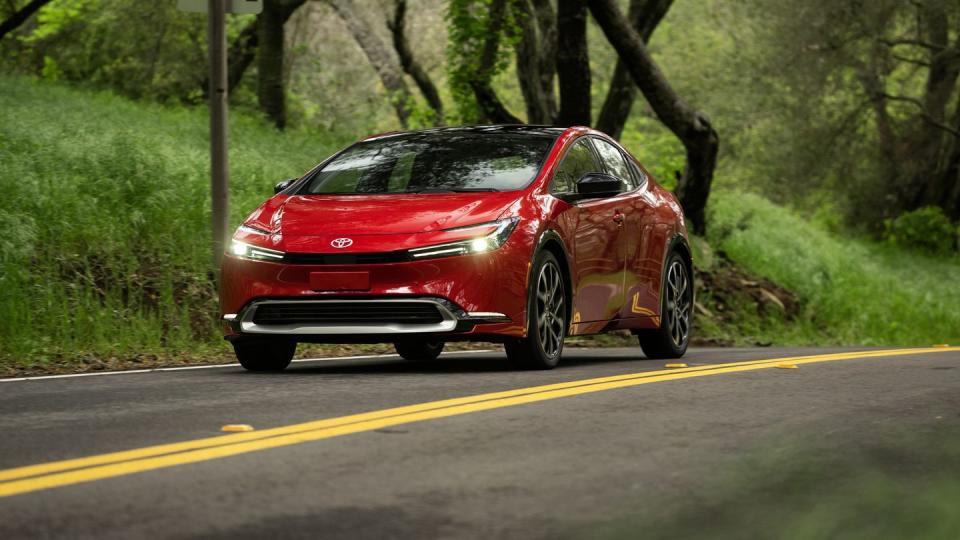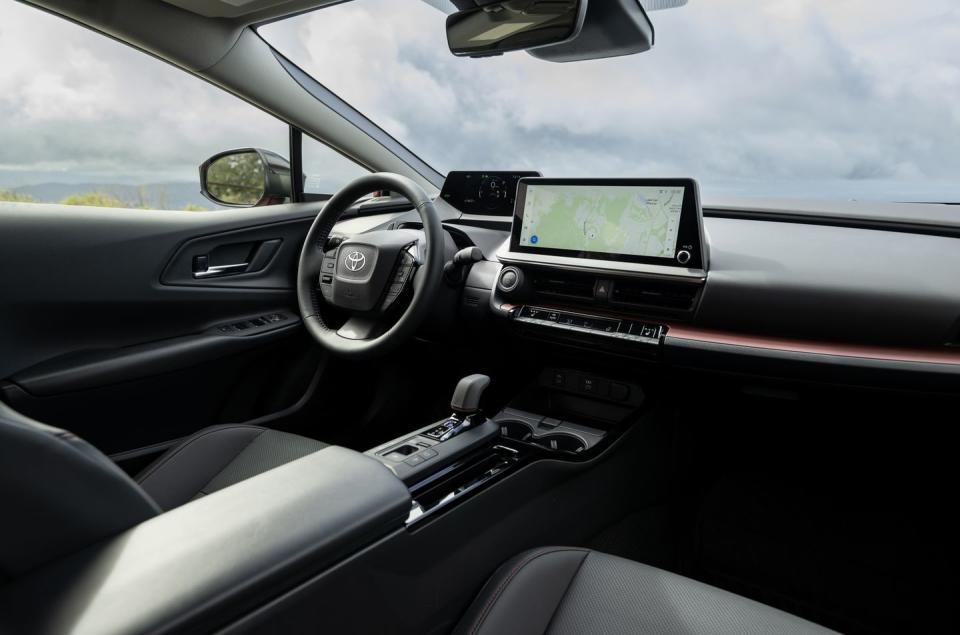2023 Toyota Prius Prime: Catching Up to the Joneses

Toyota claims that the raw materials required for just one EV could instead go on to power seven plug-in hybrids or 90 traditional hybrids. Given Toyota's goal to spread electrification of any kind as far and wide as it can, hybrids will remain an important part of the automaker's portfolio for some time. And if they're sticking around, they may as well be good. We've already driven—and enjoyed—Toyota's new Prius, so it shouldn't come as a surprise that the plug-in Prius Prime is a fab little hatchback too, eliminating many of our concerns with the outgoing version.
The Prius Prime has been around since 2017, and in recent years it's been feeling its age. We tested a 2022 model ahead of its retirement, and while the PHEV's fuel-economy benefits were hard to ignore, it was even harder to ignore its time-it-with-a-sundial acceleration, middling EV range, and frustrating touch controls.
For 2023, Toyota sent all those frustrations to The Bad Place and gave the Prius Prime a massive aesthetic and mechanical glow-up. With minor exceptions in badging, wheel design, and some silver trim around the lower air dam, the Prius and Prius Prime are now nearly indistinguishable—which is great, because the Prius looks better than it ever has. The second flap on the rear fender, which hides the SAE J1772 charging port, is an easy way to tell the two apart.
But it's the upgraded mechanicals that make the Prius Prime relevant again. The Atkinson-cycle four-cylinder grows from 1.8 liters to 2.0, boosting engine output from a sad 95 horsepower and 105 pound-feet of torque to a more sensible 150 horsepower and 139 pound-feet. The engine works in conjunction with a 161-hp permanent-magnet AC electric motor driving the front wheels—a second motor is integrated into the Prime's planetary gearset—for a net output of 220 horsepower, a huge leap over the 2022 model's 121-hp rating. Toyota believes the 2023 Prius Prime will reach 60 mph in just 6.6 seconds, a massive improvement over the outgoing model, which required 10.3 seconds for the same feat in our testing.
Toyota also addressed range concerns by growing the Prime's usable lithium-ion-battery capacity from a C/D-estimated 6.2 kWh to 10.9 kWh. The car will now operate on electricity alone for an EPA-estimated 44 miles (for the base SE, dropping to 39 miles on better-equipped trims), nearly doubling the old model's range, yet only requiring four hours on a Level 2 charger to top off the battery. When functioning in regular hybrid mode, the Prime will return an EPA-estimated 53 mpg combined for the base SE and 50 mpg combined for XSE and XSE Premium variants. To the top trim you can also add a solar roof, which can feed up to 185 watts to the battery or the 12-volt electrical system. It won't net you much charge while shopping, but it's better than nothing.
On the roads around Carlsbad, California, the Prime's perkier powertrain is immediately appreciated. Even in Eco mode, where the throttle is least sensitive, the plug-in Prius no longer feels like a slow-moving danger to others. It's perfectly capable of getting up to speed with e-propulsion alone, but when the engine does kick in, it does so smoothly and without a lot of annoying drone. The Prius Prime is a little more playful now too, thanks to a stiffer TNGA-C chassis, but the suspension tuning remains on the softer side, soaking up road inconsistencies without sending much jostling into the cabin. Save for a little bit of wind whistling around the A-pillars, it's pretty quiet inside as well.


 Yahoo Autos
Yahoo Autos 